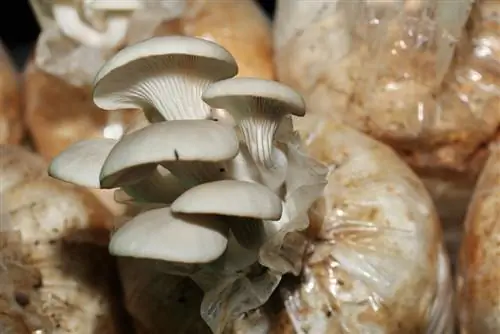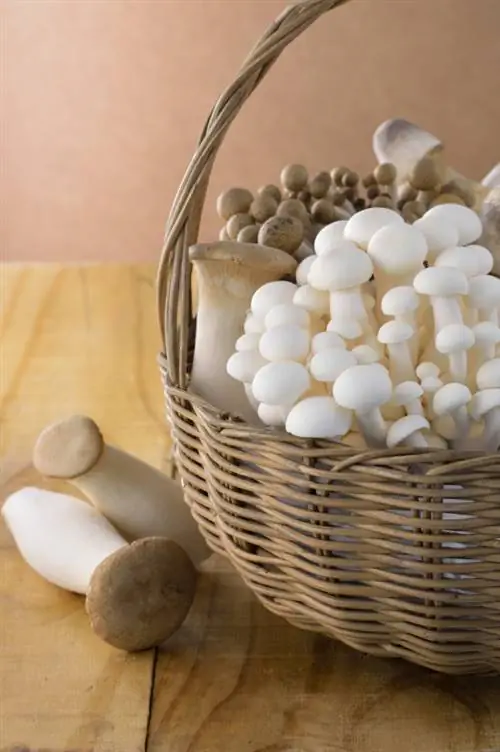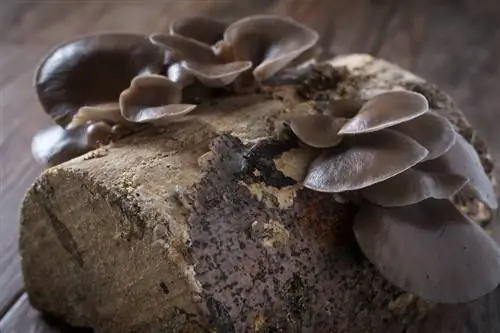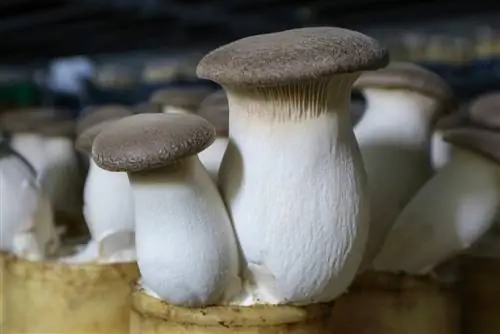- Author admin [email protected].
- Public 2023-12-16 16:46.
- Last modified 2025-01-23 11:21.
The native oyster mushroom or oyster mushroom is a typical winter mushroom: it only feels really comfortable at low temperatures of less than 11 °C. The tasty edible mushroom can be easily grown at home - for example in a shady corner of the garden. But you can also expect a rich harvest in the cellar or on the balcony. In addition to ready-made cultures, you can also get grain spawn and so-called inoculating dowels that are driven into the wood.
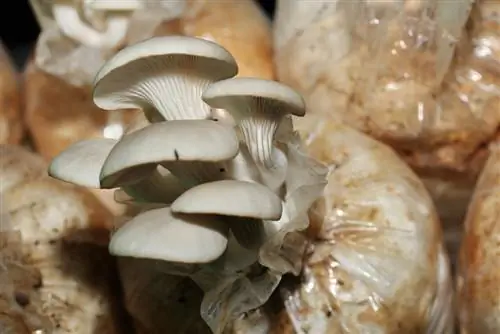
How to grow oyster mushrooms at home?
Oyster mushrooms can be grown at home in the garden, basement or on the balcony. Suitable woods include copper beech, birch, ash, alder, poplar, willow and fruit trees. Ready-made crop sets allow for quick harvesting, while logs produce fruiting bodies for several years.
Particularly uncomplicated: ready-made crop sets for home and garden
In contrast to inoculating logs for growing in the garden, the ready-made crop sets enable a quick harvest. The mushroom spawn is delivered together with the substrate material such as straw pellets, wood chips, etc. for you to mix yourself. Instructions for this are included in each case. If there is enough moisture, the fruiting bodies will appear within a few weeks.
Growing oyster mushrooms indoors
Like houseplants, mushroom cultures take up little space. They can be kept on the balcony, in the garden or in the basement in a shady place at temperatures of around 10 °C. Harvesting in your own four walls works without any problems as long as it is dark and moist enough. In addition, it only takes a few minutes from harvest to cooking pot. You can't get fresher mushrooms!
Create your own oyster mushrooms in the garden
Mushrooms cultivated on wood produce fruiting bodies for several years. Oyster mushrooms grow exclusively on hardwood, although only wood that is not older than four to twelve weeks after cutting is suitable for inoculation with mushroom spawn. Fresh wood - just like seasoned wood - is unsuitable for cultivation because the fungal mycelium is not able to grow through he althy wood. The tree's defenses counteract this. It is also important that the bark of the wood is still intact. In dry and therefore cracked trunks and branches, the mycelium no longer has the necessary moisture available.
Which woods are suitable for oyster mushrooms?
When it comes to wood, a distinction is made between hardwood and softwood. Hardwood includes, for example, oak, common beech, hornbeam, ash, maple, apple and pear trees, while birch, lime, willow, alder and poplar are softwood. Mushrooms grown on softwoods generally produce fruiting bodies more quickly than those grown on hardwoods. You can often harvest on softwood the same year, but certainly the following year, after inoculation; the culture remains active for about three years. On hardwood, however, harvesting can often only take place after a year, while the culture then produces fruiting bodies for five to seven years.
Particularly suitable woods for growing oyster mushrooms are:
- Common Beech
- Birch
- Ash
- Alder
- Poplar
- Willow
- and fruit trees
Tip
Oyster mushrooms in particular not only grow on wood, but also thrive in straw mixed with coffee grounds.

